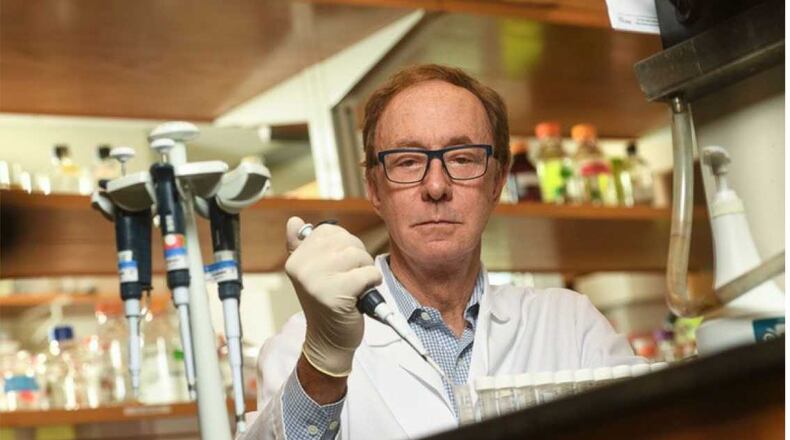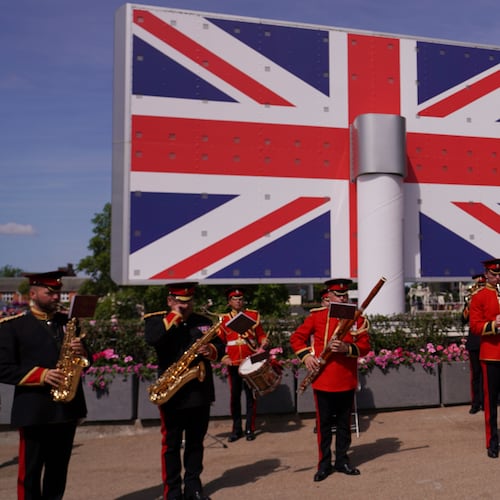More than a year and a half into the pandemic, many American universities are still struggling to return to research. COVID-19 has made travel, field work, and international collaboration difficult — and at times impossible.
Recent survey data show that anywhere from 15 to 18 percent of universities completely shut down their labs during the first months of the pandemic. Other universities paused their research but continued in some form.
At Emory, we were fortunate. While we suspended operations for a brief period, we did not shut down. And we quickly ramped back up to respond to the emergency.
Credit: contributed
Credit: contributed
COVID-19 wasn’t our first time navigating a disease outbreak with global implications. Emory has a long history of navigating pandemics and epidemics.
The antiretroviral drug Emtriva, discovered in the 1990s by Emory scientists, changed the meaning of an HIV/AIDS diagnosis for patients— from a death sentence to a chronic condition that can be managed.
In 2014, the world looked on as the first of four patients with Ebola virus disease arrived at Emory’s doorstep. Emory doctors and nurses successfully treated these patients, displaying extraordinary courage and devising safety procedures that are now standard for serious communicable diseases.
That same courage, coupled with a deep bench of infectious disease experts, is now helping Emory lead in the fight against COVID-19. Together, we are connecting patients, families and communities to science and care that save lives.
The results are in the numbers. From Feb. 17, 2020, as the pandemic was starting in the United States, to Sept. 26, 2021, Emory Healthcare had a 93 percent survival rate for COVID-19 patients — among the highest in the world.
At the Emory Vaccine Center and across the Woodruff Health Sciences Center, our scientists are working to conquer COVID-19. Emory researchers tested all three of the vaccines now on the market in the United States — Pfizer, Moderna and Johnson & Johnson. And Emory experts are developing and testing therapeutic medications to treat those who fall ill with the disease.
Baricitinib, a repurposed drug first used in the United States against COVID-19 at Emory, has received emergency authorization for use in hospitalized COVID-19 patients needing respiratory support. And molnupiravir – an antiviral pill that is now being reviewed by the Food and Drug Administration as a treatment for COVID-19 – serves as a reminder that Emory is organized and deployed for invention, innovation and development.
The advances Emory has made against COVID-19 and other infectious diseases have been phenomenal. Equally important is the work we are doing to increase public engagement in science. It is in our Emory DNA to connect and communicate with the public in order to inform rational decision making.
In the long run, this public-facing work could be more important than anything else. Because discovery and development without trust amount to nothing.
We can have all the vaccines in the world, all the antiviral pills we need to combat a disease, but if the public does not trust their efficacy and safety — if people do not understand the science that went into them— then we have failed as a scientific community to educate and protect the public.
This is the next scientific revolution, urgently needed and long overdue. It is a revolution in trust — one that takes public engagement seriously. It aims to bridge the divide between higher education institutions and local communities. It focuses on young people, and it starts outside the classroom.
That is one reason I am thrilled that Emory has joined the Science Gallery Network, a global university-led collaborative dedicated to public engagement with science and art. Science Gallery aims to reach young people between 15 and 25 years of age. Each exhibit creates interactive opportunities to experiment while learning, inviting young people to become co-creators in the scientific and artistic processes.
Launching next year, Science Gallery Atlanta is free to the public. Emory student mentors will play a key role, helping connect exhibit visitors to the science, inspiring local young people to pursue big dreams where science and art collide. Titled “Hooked,” next year’s exhibit will examine addiction and recovery, themes that have become even more important during the pandemic.
Trust in science is built one connection at a time. We need to provide meaningful avenues for people to engage in the scientific process in — and for — their communities. During the pandemic, we’ve been so busy arguing about our differences, we’re at risk of losing one thing we hold in common: our natural curiosity about how the world works — and the human yearning to create something meaningful.
I would argue that community-focused scientific engagement is our best chance to help restore the credibility of scientific research within our current national climate. And directing our efforts toward the next generation is our best opportunity for lasting change. This is an urgent calling, and every major American research university should be striving to foster such connections.
We should build this new scientific revolution into every university strategic plan, bringing scientific discovery into our cities, towns, and rural neighborhoods. And we shouldn’t limit it to the fields that we typically think of as science. Art and the humanities also play a role in creation.
The time to act is today. In a world increasingly dominated by climate-related disasters, it’s not a question of if there will be another pandemic, but when.
When that happens, we need the public to trust us to be ready.
Deborah Watkins Bruner, RN, Ph.D., is senior vice president for research at Emory University, chair and professor of nursing at Emory’s Nell Hodgson Woodruff School of Nursing, professor of radiation oncology at Emory University School of Medicine, and a member of the Winship Cancer Institute. Bruner is a member of the National Academy of Medicine.
About the Author
Keep Reading
The Latest
Featured



